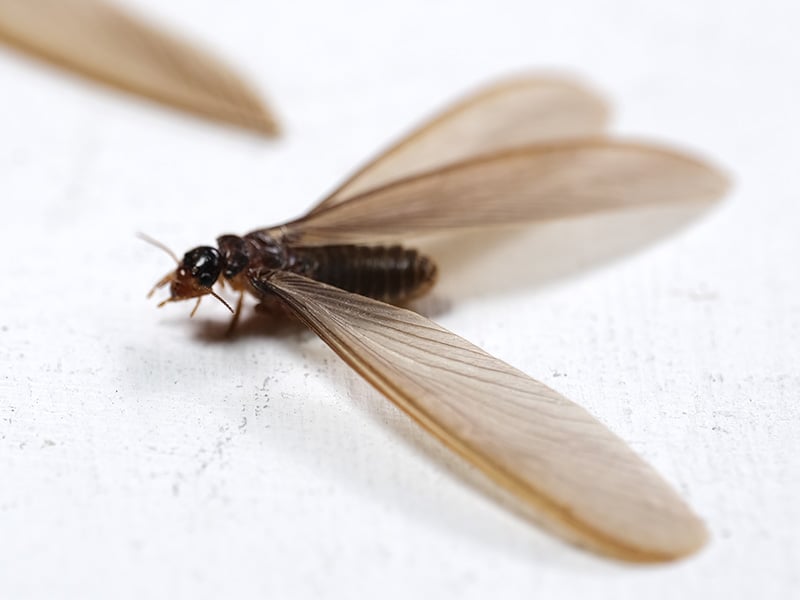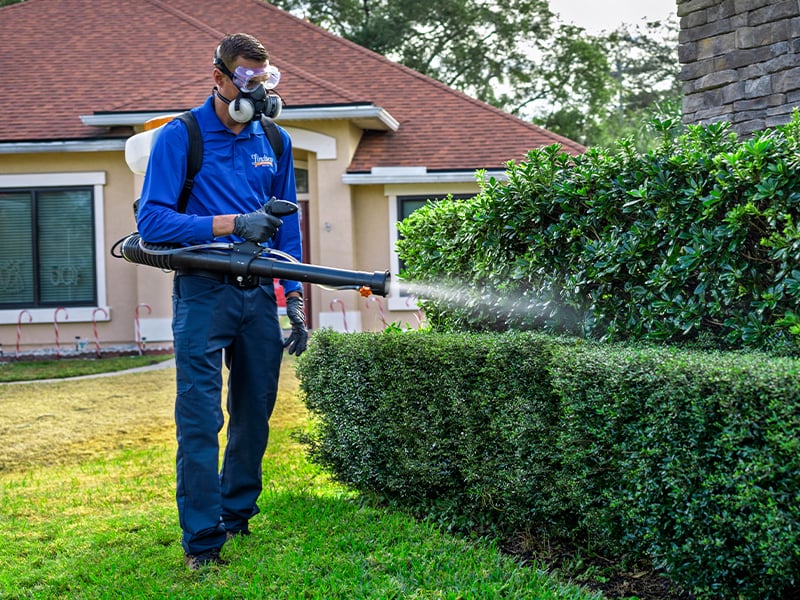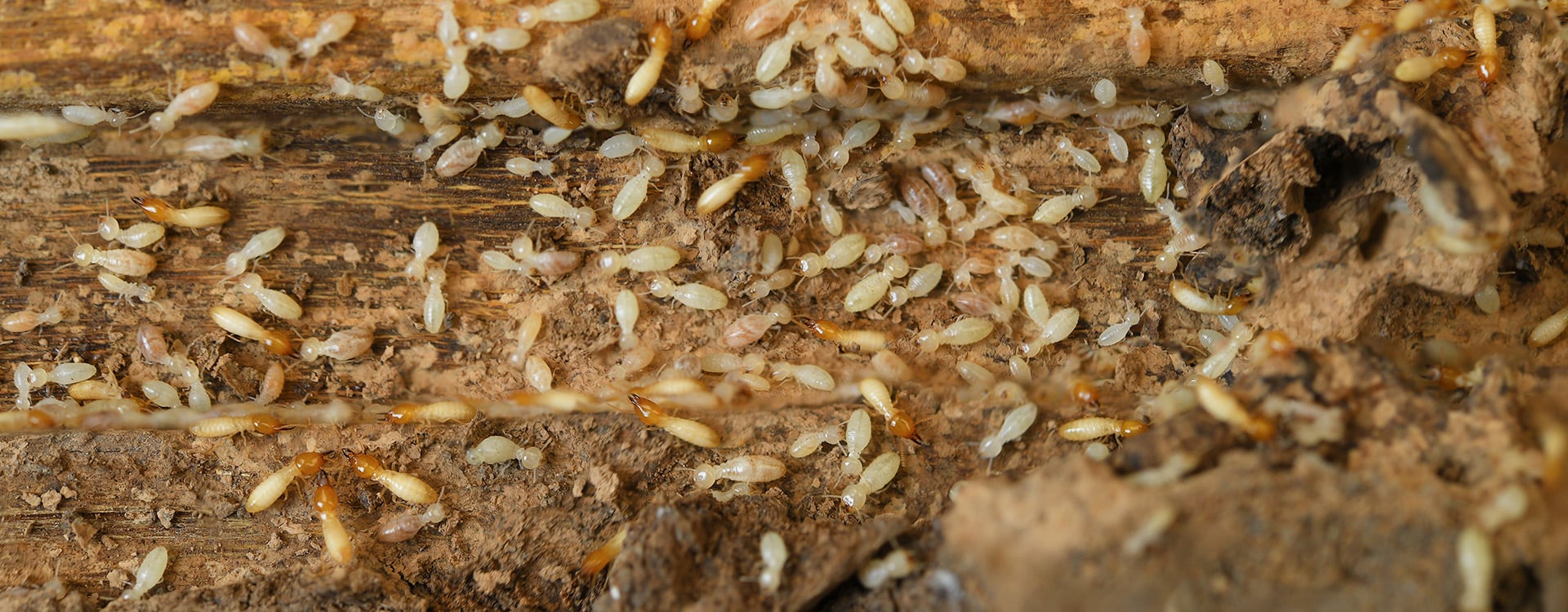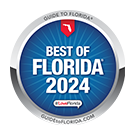What do termites look like?
Termites are small insects often mistaken for ants. They live in colonies made up of castes or groups, including worker termites, queens, and swarmers. In Florida, Eastern subterranean termites and drywood termites are the most prolific. Continue reading for descriptions of each pest.

Subterranean Termites
Found in every state, subterranean termites build their colonies in the soil. Worker termites are the ones you’re likely to see in the soil around your structure or infesting wood inside. They are soft-bodied and have a creamy hue. They travel from their underground colonies to potential food sources, like your home, through small mud tubes.
Winged termites (or “swarmers”) are the reproductive members of the colony and only appear during a termite swarm. A termite swarm occurs when it is time for them to leave their existing colony, find a mate, and start a new colony of their own.
Evidence of a swarm inside your home includes shed wings around doors and windows.

Drywood Termites
Less common than subterranean termites, drywood termites are found in Southwestern states, southern states, and coastal areas.
In homes, drywood termites are often found in attics. They require very little moisture to survive, which means they do not require a connection to the soil like subterranean termites.
Drywood termites are slightly larger than subterranean termites. You will likely find piles of tiny fecal pellets in the windowsills if you have a drywood termite infestation.
When are termites most active?
How do I know if I have termites?
Termites like to stay out of sight, meaning property owners may have a colony of termites living in their walls for months without seeing the pests. You're more likely to notice the signs of termites, such as termite mud tubes, termite swarms, or discarded termite wings. You may also uncover termite damage before you see a termite in your home.
What attracts termites?
Subterranean termites are attracted to several factors that provide them with the ideal conditions for nesting, foraging, and thriving. Here are the main attractions for this species:
-
Subterranean termites are highly attracted to moisture and require it to survive. This includes leaky pipes, poor drainage, areas with high humidity, and water-damaged wood.
-
They feed on cellulose, which is found in wood and wood by-products. They are especially attracted to dead or decaying wood. Paper and cardboard also attract termites as they contain cellulose.
-
Subterranean termites build their nests in the soil and create mud tubes to travel between their nests and food sources. They are attracted to areas where wood is in direct contact with soil.
Drywood termites infest dry, sound wood, including structural timbers, furniture, flooring, and framing. Here's what attracts these termites:
-
Wood with low moisture content.
-
Exposed wood in areas such as attics, eaves, and siding.
-
Furniture and other wooden items.
Are termites dangerous?
Termites do not pose direct health risks to humans, but their presence can lead to significant problems. They are dangerous due to the structural damage they can cause to buildings and wooden structures. According to industry experts, termites cause over $5 billion in damages every year in the U.S.
How do I get rid of termites?
If you suspect a termite infestation, it's crucial to contact professional termite exterminators immediately. Lindsey Pest Services provides effective termite control solutions, including:
-
The use of the Termatrac system identifies areas conducive to termite activity and detects movement inside your walls. If you have a termite infestation, licensed pest control experts can apply treatments to eliminate active termites.
-
We are also Certified Sentricon® Specialists™, licensed to use the Sentricon® Always Active™ termite monitoring system to prevent future termite infestations.
Homeowners can also bundle termite control with home pest control services for greater protection and savings. Check out our Best Plan below or give us a call!
Best Pest Control Plan
For protection from common household pests and pests that take over your backyard, Lindsey Pest’s Best plan is the ideal choice. Starting at only $69* per month, this home pest control plan offers the same benefits as the Better plan but also includes treatments that significantly reduce mosquito activity, control fire ants, and keep scorpions and other stinging insects away from your property!
With this plan, you’ll receive an initial service that includes a comprehensive interior and exterior inspection, as well as treatment for any existing pest problems. To keep your home pest-free, a Lindsey Pest technician will return every quarter to treat the exterior of the home.
-
Quarterly Pest Service
-
Lindsey Pest Free Guarantee
-
30+ Common Pests
-
Webbing Removal (Up to 12 ft)
-
Wasp Removal (Up to 12 ft)
-
Rodent Control & Trapping
-
Seasonal Mosquito Suppression
-
Fire Ant Control
-
Scorpion & Other Stinging Insect Control
Pests Covered In This Program:
German Cockroaches, American Cockroaches, Brown Banded Cockroaches, Australian Cockroaches, Asian Cockroaches, Woods Roaches, Carpenter Ants, Pyramid Ants, Rover Ants, Ghost Ants, Thief Ants, Monomorium Ants, Acrobat Ants, Big-Headed Ants, Odorous House Ants, Pavement Ants, Little Black Ants, Silverfish, Fire Brats, Springtails, Psocids, Polistes Wasps, Crickets, Earwigs, Cellar Spiders, Jumping Spiders, Weevils, Cigarette Beetles, Drugstore Beetles, Confused Flour Beetles, and Fungus Gnats, Rodents PLUS Mosquitoes, Fire Ants, Scorpions, and Stinging Insects.
Additional Details
* New customers only - after initial fee. Some exclusions may apply.
* One year service agreement required
* Early cancellation fee may apply

Get Your Free Pest Control Quote Today!
Complete the form below to get started with your free, no-obligation quote, and a Lindsey Pest representative will contact you shortly.
Same Day Service Available!









